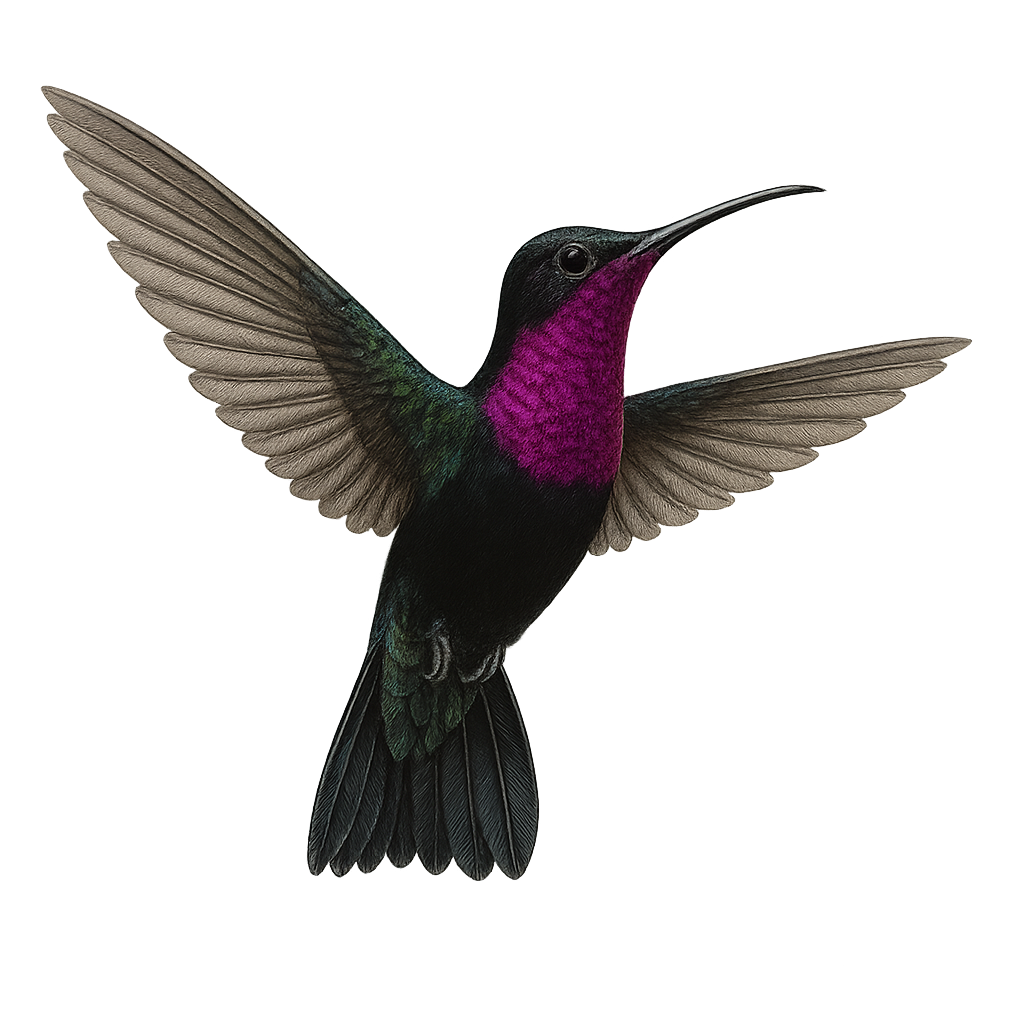Your wildlife photography guide.
Explore the purple-throated carib in detail, study its behavior, prepare your shots.
Where to observe and photograph the purple-throated carib in the wild
Learn where and when to spot the purple-throated carib in the wild, how to identify the species based on distinctive features, and what natural environments it inhabits. The WildlifePhotographer app offers tailored photography tips that reflect the purple-throated carib’s behavior, helping you capture better wildlife images. Explore the full species profile for key information including description, habitat, active periods, and approach techniques.
Purple-throated Carib
Scientific name: Eulampis jugularis

IUCN Status: Least Concern
Family: TROCHILIDAE
Group: Birds
Sensitivity to human approach: Suspicious
Minimum approach distance: 5 m
Courtship display: March to June
Incubation: 15-17 jours
Hatchings: March to July
Habitat:
Tropical rainforests, gardens, wooded areas
Activity period :
Primarily active during the day, with peak activity in the morning and late afternoon.
Identification and description:
The Purple-throated Carib, or Eulampis jugularis, is a captivating bird native to the Caribbean, especially found on the islands of Dominica and Martinique. This hummingbird is noted for its striking plumage, with an iridescent purple throat that gives it its name. Males are generally larger than females and display more vibrant colors. They primarily feed on nectar but also consume small insects to supplement their diet. The Purple-throated Carib is a vital pollinator, playing a crucial role in the ecosystem by aiding the reproduction of many plants. It is often seen in tropical rainforests, gardens, and wooded areas, where it flies with agility and speed.
Recommended lens:
400 mm – adjust based on distance, desired framing (portrait or habitat), and approach conditions.
Photography tips:
To photograph the Purple-throated Carib, it is advisable to use a 400mm lens or longer to capture the details of its striking plumage without disturbing it. Patience and discretion are essential, as this bird is suspicious. Choose a location where hummingbirds frequently feed, such as near nectar-rich flowers. Use a tripod for stability and set your camera to a fast shutter speed to freeze the rapid movement of its wings. Natural morning or afternoon light is ideal to highlight the iridescent colors of its plumage.
The WildlifePhotographer App is coming soon!
Be the first to explore the best nature spots, track rutting seasons, log your observations, and observe more wildlife.
Already 1 432 wildlife lovers subscribed worldwide

